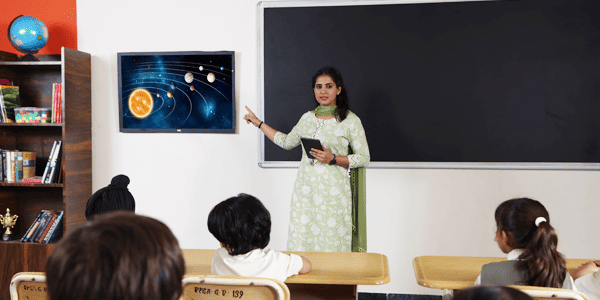A Comprehensive Guide to the Different Learning Approaches in Primary Science Direction
The exploration of diverse understanding approaches in primary scientific research direction provides an opportunity for teachers to enhance trainee engagement and understanding considerably. By analyzing hands-on learning methods, inquiry-based approaches, and collective approaches, we can identify reliable techniques that cater to numerous discovering styles.

Hands-On Discovering Methods
Hands-on discovering methods play an essential role in main scientific research direction, engaging students in active expedition and experimentation. These approaches allow learners to connect directly with phenomena and products, cultivating a much deeper understanding of clinical principles. By using manipulatives, designs, and real-life experiments, instructors develop an environment where trainees can observe, assume, and test their concepts.
Such techniques not just improve understanding however likewise grow critical thinking and analytical skills. When students take part in activities like building basic devices, growing seeds, or conducting chain reactions, they are motivated to ask questions and look for responses with their own observations. This experiential approach assists to demystify complex clinical principles, making them extra obtainable and relatable.
Moreover, hands-on understanding advertises collaboration amongst peers, as students frequently operate in groups to conduct experiments or share findings. This teamwork not just enhances their learning experience but also develops necessary social skills. Eventually, incorporating hands-on methods in key scientific research guideline cultivates a long-lasting love of learning and curiosity concerning the environment, laying a strong foundation for future scholastic pursuits in scientific research and past.
Inquiry-Based Learning
Inquiry-based learning is an instructional technique that encourages pupils to ask questions, explore sensations, and create their own understanding of scientific ideas. This method shifts the emphasis from conventional teacher-led direction to a much more student-centered experience, where learners take the effort in their educational journey. By fostering interest, inquiry-based understanding advertises much deeper interaction with the product, allowing students to check out topics in a meaningful context.
In technique, this method frequently involves hands-on experiments, observations, and critical thinking tasks that straighten carefully with the scientific technique. Trainees are urged to create theories, design examinations, and assess data, which cultivates important abilities such as analytic and analytical thinking. The role of the teacher in this structure is to promote expedition, assisting trainees through the query procedure while motivating independent thought and partnership.
Furthermore, inquiry-based discovering nurtures a feeling of ownership over the understanding procedure, encouraging students to pursue knowledge actively. This method not just boosts understanding of scientific principles but additionally promotes a long-lasting love for discovering, furnishing students with the skills needed to navigate an increasingly complicated world.
Collaborative Knowing Approaches
Joint learning approaches equip trainees to involve in meaningful interactions with peers, fostering a common duty for their educational outcomes. In key science instruction, these methods motivate students to collaborate to explore scientific principles, address troubles, and conduct experiments (primary science tuition Singapore). By taking part in group activities, pupils can leverage diverse perspectives, enabling richer understanding and retention of scientific expertise
One trick aspect of joint discovering is the focus on interaction skills. Trainees have to verbalize their ideas, listen actively to others, and bargain concepts, every one of which are essential competencies in both real-world and scholastic contexts. This social interaction not only boosts their understanding of clinical concepts however additionally promotes team effort and problem resolution skills.
When pupils see the value of their payments within a group, they are much more likely to take possession of their understanding trip. In general, incorporating joint understanding techniques in main scientific research instruction cultivates a vibrant discovering atmosphere that prepares pupils for future academic and social challenges.
Technology Integration in Scientific Research
The assimilation of technology in main science direction enhances discovering experiences by supplying ingenious tools and sources that sustain various training methodologies, including joint discovering - primary science tuition Singapore. Making use of electronic platforms, simulations, and interactive applications enables students to involve deeply with clinical concepts, assisting in a more hands-on approach to learning
Digital research laboratories, for circumstances, enable students to carry out experiments securely and successfully, advertising inquiry-based discovering. These tools can imitate real-world clinical scenarios, allowing pupils to visualize complex procedures that would certainly be difficult to reproduce in a typical class setup. In addition, innovation promotes communication and partnership amongst trainees, as they can share searchings for and collaborate on tasks through online platforms.
In addition, multimedia presentations and academic videos can enrich lessons by dealing with varied discovering styles, making abstract principles much more accessible. Data analysis tools also encourage pupils to accumulate and analyze scientific see it here information, enhancing essential assuming abilities. On the whole, the critical unification of innovation in key scientific research direction not just enhances interaction yet likewise prepares trainees for a highly sophisticated society, furnishing them with essential abilities for future clinical endeavors.
Set Apart Instruction Strategies
Set apart guideline strategies are necessary for resolving why not try here the varied requirements of learners in main science education. These strategies make it possible for educators to tailor their training techniques to fit differing capabilities, interests, and finding out styles within the class. By using differentiated direction, teachers can create an inclusive setting that fosters involvement and boosts understanding of clinical concepts.
One reliable method is to utilize versatile grouping, which enables students to collaborate with peers at comparable ability levels or with differing perspectives. This strategy urges peer understanding and advertises essential reasoning. Additionally, providing options in jobs can empower pupils, enabling them to choose projects that resonate with their passions while still satisfying curricular objectives.
Furthermore, integrating tiered assignments is an additional beneficial technique. By developing tasks with varying levels of complexity, educators can ensure that all students are properly tested, no matter their efficiency. Utilizing developmental evaluations to evaluate understanding further allows instructors to adjust their training approaches dynamically, making certain that each student gets the support they need.
Inevitably, implementing distinguished direction strategies in primary scientific research education and learning not only boosts student knowing end results but likewise grows a passion for science, preparing trainees for future academic pursuits.

Verdict
In recap, effective main science direction demands a complex technique that incorporates hands-on learning, inquiry-based techniques, and joint methods. The assimilation of technology and distinguished direction additionally caters to varied learning designs, promoting an environment helpful to exploration and important thinking.
The exploration of diverse knowing approaches in main science direction offers an opportunity for educators to improve trainee involvement and comprehension substantially.Hands-on discovering methods play a crucial role in main scientific research instruction, engaging trainees in energetic expedition and trial and error.Inquiry-based understanding is an educational method that encourages pupils to ask inquiries, investigate sensations, and create their very own understanding of scientific ideas.Collective knowing methods equip students to involve in meaningful interactions with peers, cultivating a common see it here obligation for their academic results. Generally, incorporating collective knowing techniques in main science instruction grows a dynamic discovering atmosphere that prepares pupils for future scholastic and social difficulties.